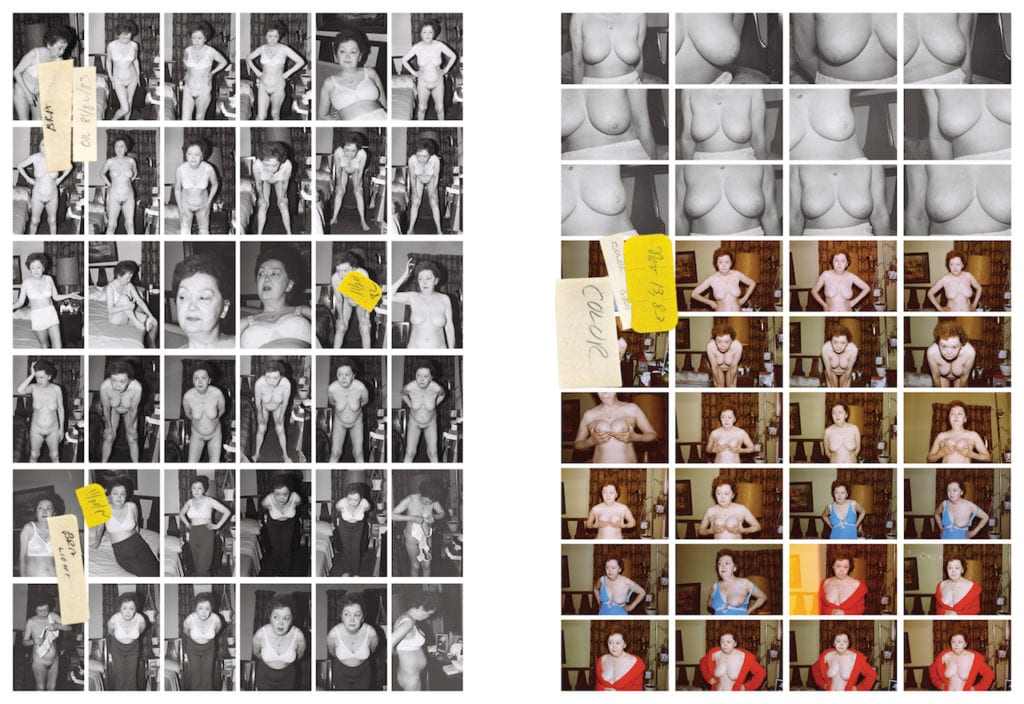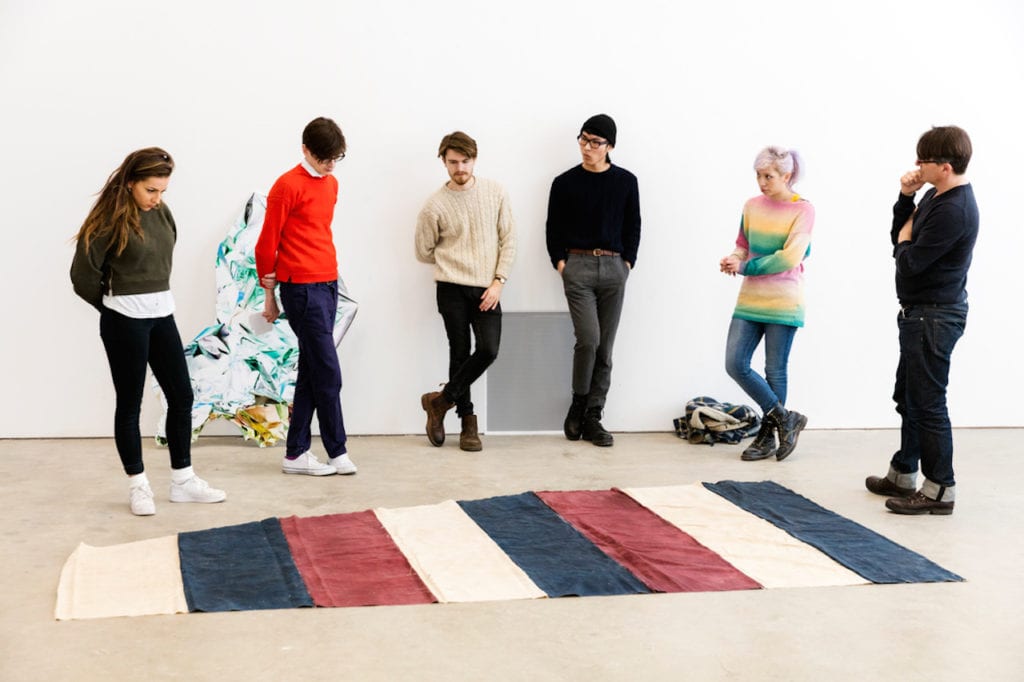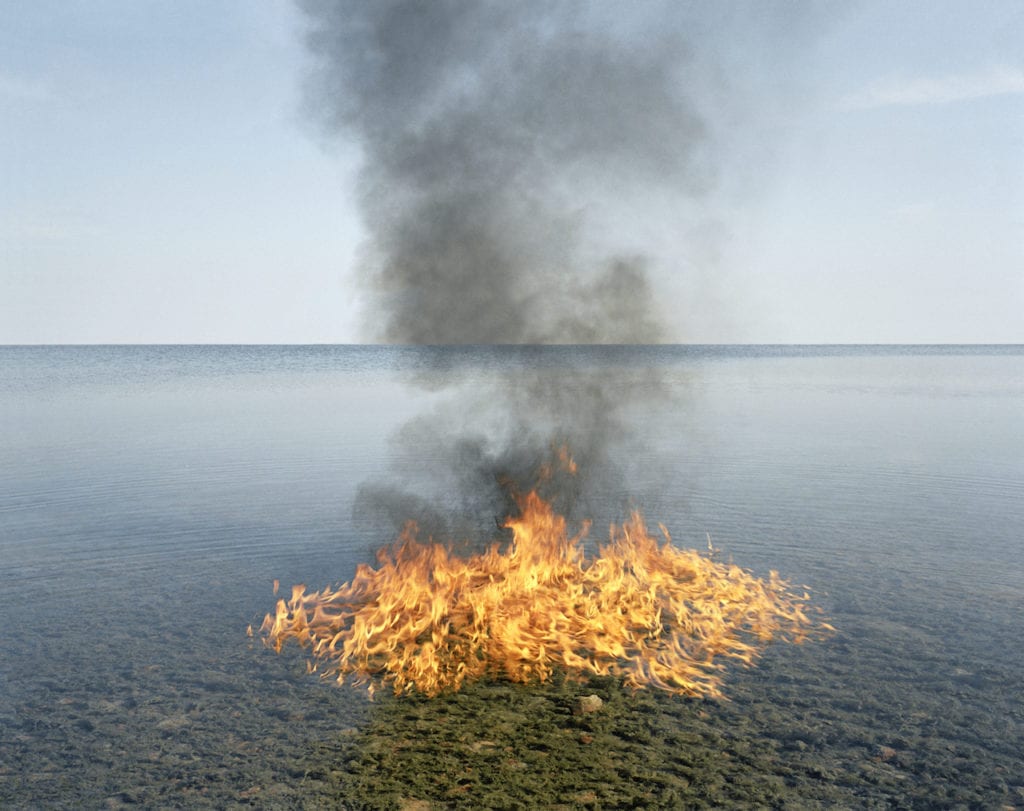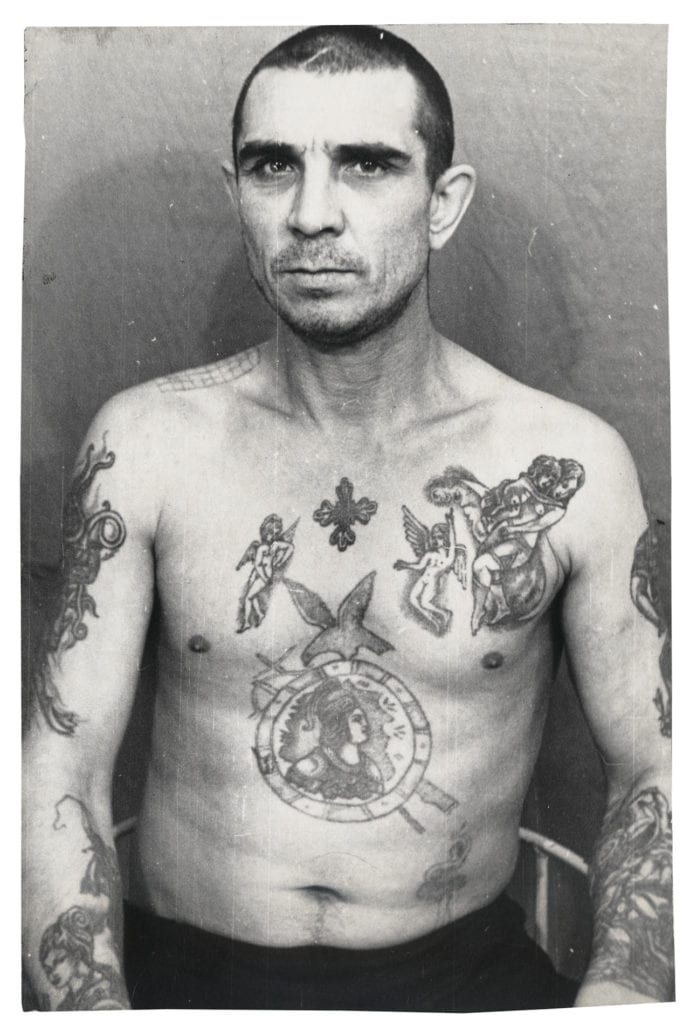Think of Oxford and it’s the world-famous university that will probably spring to mind first; the ancient city is not necessarily one you would immediately associate with photography. But that may be about to change with the debut of a new fortnight-long “celebration of photography” from 08-24 September, curated by Tim Clark and Greg Hobson.
With a focus on the medium’s “potential to conceal and reveal”, the programme is small but convincing, with work carefully matched to specific venues in the city centre. For example, Oxford’s old fire station, now a thriving public arts space, will host an exhibition of photographs devoted to Russian prison tattoos.
It draws on the archive of Arkady Bronnikov, an expert in criminalistics at the USSR Ministry of Internal Affairs with a vast knowledge of tattoo symbolism, who collected hundreds of images originally held in official files from the mid-1960s to 1980s, together with Sergei Vasiliev’s photographs of Russian inmates, taken between 1989 1993 in prisons and reform settlements across Chelyabinsk, Nizhny Tagil, Perm and Saint Petersburg. Both archives have been collected by Damon Murray and Stephen Sorrell of Fuel design agency, which has published three volumes of books on the subject.

From Taking Off. Henry My Neighbour © Mariken Wessels
With a focus on the medium’s “potential to conceal and reveal”, the programme is small but convincing, with work carefully matched to specific venues in the city centre. For example, Oxford’s old fire station, now a thriving public arts space, will host an exhibition of photographs devoted to Russian prison tattoos.
It draws on the archive of Arkady Bronnikov, an expert in criminalistics at the USSR Ministry of Internal Affairs with a vast knowledge of tattoo symbolism, who collected hundreds of images originally held in official files from the mid-1960s to 1980s, together with Sergei Vasiliev’s photographs of Russian inmates, taken between 1989 1993 in prisons and reform settlements across Chelyabinsk, Nizhny Tagil, Perm and Saint Petersburg. Both archives have been collected by Damon Murray and Stephen Sorrell of Fuel design agency, which has published three volumes of books on the subject.

The show will be complemented by works from Mariken Wessels’ critically-acclaimed Taking Off. Henry My Neighbour, which tells the story of a failed marriage, sexual frustration and voyeurism through archival photographs and collage; and a new body of work by Martin Parr on student life, co-commissioned with The Bodleian Libraries and Oxford University Press (which will publish the accompanying book).
Photo Oxford will also present Edgar Martins’ Siloquies and Soliloquies on Death, Life and Other Interludes, a poignant exploration of the depiction of death through documentary photography and fictional approaches, and work from an open call, together with an accompanying programme of events.
The curators, who are former colleagues from the Science Museum’s respected Media Space and National Media Museum venues, had planned a more ambitious programme but, when Arts Council England funding wasn’t forthcoming, decided to scale back their plans rather than spread resources thinly. Not receiving the funding was disappointing, they admit, but it ushered in a sharp focus on quality over quantity – and they were able to proceed with a financial injection provided by alternative trusts, councils, and private individuals.

The Ruskin School of Art Tutorial, 2016. From the series, Oxford © Martin Parr/Magnum Photos
Photo Oxford will also present Edgar Martins’ Siloquies and Soliloquies on Death, Life and Other Interludes, a poignant exploration of the depiction of death through documentary photography and fictional approaches, and work from an open call, together with an accompanying programme of events.
The curators, who are former colleagues from the Science Museum’s respected Media Space and National Media Museum venues, had planned a more ambitious programme but, when Arts Council England funding wasn’t forthcoming, decided to scale back their plans rather than spread resources thinly. Not receiving the funding was disappointing, they admit, but it ushered in a sharp focus on quality over quantity – and they were able to proceed with a financial injection provided by alternative trusts, councils, and private individuals.

Hobson insists there is a commitment to photography in Oxford, a city he describes as “an interesting and slightly unexpected place”, situated midway between England’s two biggest cities. Clark agrees, hinting at the possibility of future editions of the festival: “There’s a lively art scene in Oxford and a wide range of spaces, from museums to public galleries, university galleries, project spaces and artist-led studios, something we’re looking to harness as we go forward,” he says.
“The project is in its embryonic stages [but] there is a lot of energy and goodwill. It’s a solid offering with some big names that will hopefully make a valid contribution to the current photographic landscape.”
www.photooxford.org

From Siloquies and Soliloquies on Death, Life and Other Interludes © Edgar Martins 
“The project is in its embryonic stages [but] there is a lot of energy and goodwill. It’s a solid offering with some big names that will hopefully make a valid contribution to the current photographic landscape.”
www.photooxford.org



